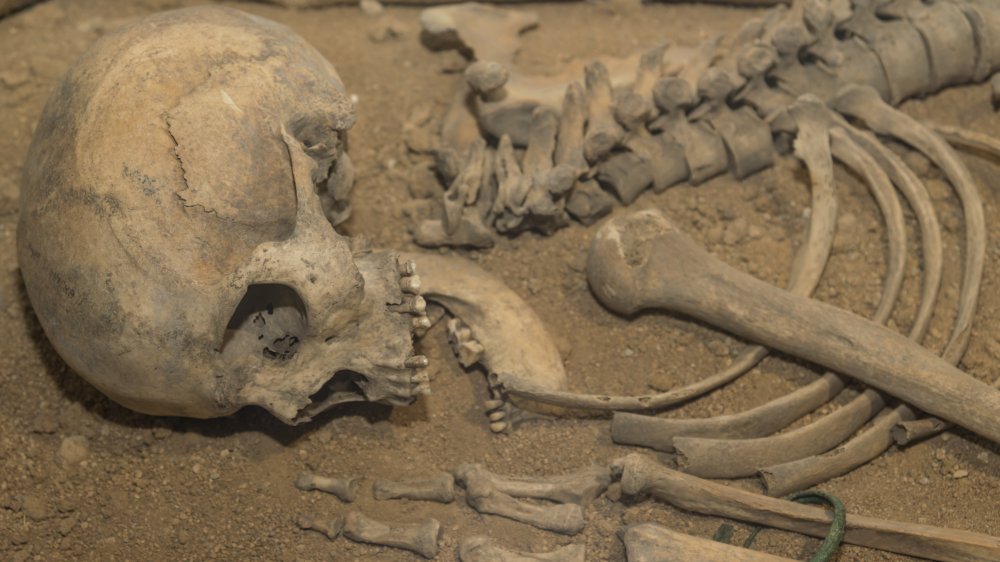Did Adam And Eve Really Exist?
It's not uncommon to assume that there is a scientific basis for the biblical version of Adam and Eve. After all, humans had to start somewhere. Often, that assumption is taken out of context, for one reason or another.
Recently, The Daily Mail did just that — misrepresenting the findings of a study conducted by Drs. Stoeke and Thaler in an article titled "All humans may be descended from just TWO people and a catastrophic event almost wiped out ALL species 100,000 years ago, study suggests." At the very bottom of the piece, i.e. after all the misinformation, they issued a correction: "Our study follows mainstream views of human evolution. We do not propose there was a single 'Adam' or 'Eve'. We do not propose any catastrophic events."
The actual findings of the study, as an exasperated piece in Forbes explains, is that after DNA barcoding, where genetic material in an organism is analyzed to identify a species, the researchers concluded two things:
First, populations must have been very small at one point. Second, all populations seemed to have suffered a similar bottleneck around 100,000 years ago. News coverage took this second part as the basis for a "catastrophic event" that killed almost all life, but as Fox News quoted from Dr. Thaler, it was probably "[Ice] ages and other forms of environmental change, infections, predation, competition from other species and for limited resources, and interactions among these forces." Furthermore, reading genetic materials only ever renders the past in the haziest of outlines. Non-biblical reasons can explain why we share such similar DNA.
Catchy names mislead
Another reason why people start talking about Adam and Eve is that someone in the Eighties — probably a journalist, but perhaps a scientist searching for a flashy term — coined the phrase "mitochondrial Eve." A mitochondrial Eve, according to Smithsonian Magazine, derives from the way mitochondrial DNA is passed down via x-chromosomes, meaning that a mitochondrial Eve is the most recent female human being with whom every human shares the same mitochondrial DNA. Note, however, that this doesn't mean that that human is necessarily the first and only. It only means that the bloodlines of other contemporary humans have died out. Essentially, it's the geneticist's version of the lowest common denominator. If we went back far enough, we would eventually find the first microscopic organism to have a mitochondria, we would find the "Eve" for life on Earth.
The male equivalent of this, the "Adam", is the Y chromosomal Adam whose Y chromosome every living male human has inherited. Like mitochondrial Eve, the Y chromosomal Adam was not the first and only man. Rather, it's simply a title indicating that his base genetics were the only one to survive to this day.
Learning more about our common ancestry
With such biblical misconceptions, the search for common ancestry throws some kinks into the mix. For example, while the image of Adam and Eve demands a contemporary existence, the genetic version doesn't. The lack of contemporaneity prompted Nature in 2013 to publish a piece announcing the possibility that the mitochondrial Eve and the Y chromosomal Adam actually did not live that far apart in time. Traditional dating placed the mitochondrial Eve in Africa 200,000 years ago while the Y-chromosomal Adam appeared only about 100,000. The study cited by Nature contested this, finding the Adam lived between 120,000 and 156,000 years ago and the Eve lived between 99,000 and 148,000 years ago.
In addition to the issue of when these beings lived, the issue of who actually is the mitochondrial Eve and the Y chromosomal Adam can be altered. In 2013, The Conversation ran a piece about the genetics of Albert Perry, a Black slave born in South Carolina. One of his descendants had their DNA tested, revealing a completely new Y chromosome, one that had not mutated in the same manner as everyone else's. This meant that a new Y chromosomal Adam existed, who after further genetic testing, was established to have probably lived in Central Africa. Though again, it must be stressed that other Y chromosomal bearing prehistoric humans would have been alive at the same time. It's simply the rest of the family tree has died, leaving us with this genetic inheritance.


